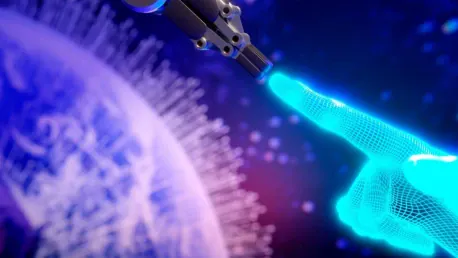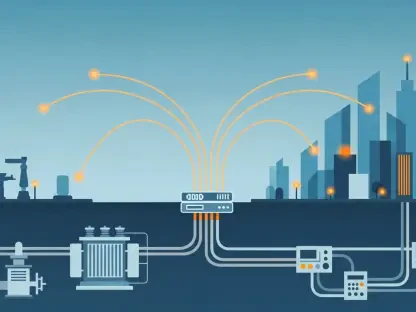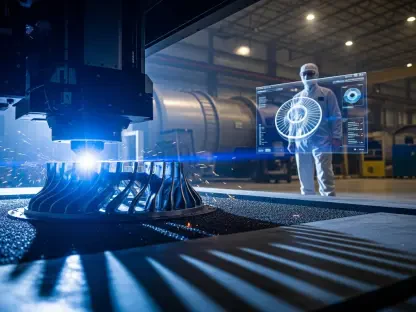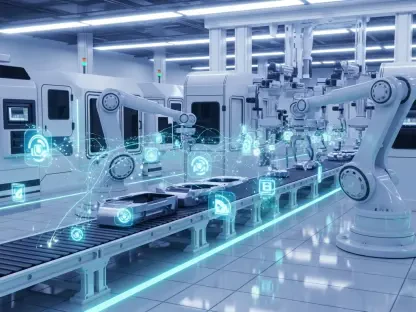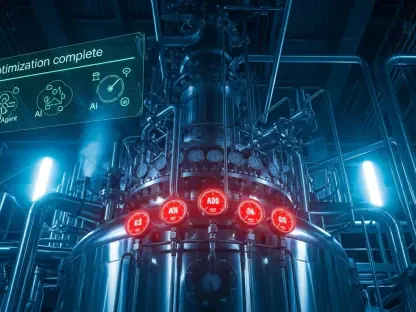Kwame Zaire is an acclaimed expert in manufacturing, with a particular interest in electronics, equipment, and production management. As a thought leader in predictive maintenance, quality, and safety, Kwame’s insights are invaluable for understanding the convergence of AI and manufacturing.
Can you start by explaining what Agentic AI is and how it differs from other types of AI, like Perception AI or Generative AI?
Agentic AI represents a significant evolution in artificial intelligence. Unlike Perception AI, which is mainly built for tasks like machine vision and quality inspections, or Generative AI, known for creating contextual content and simulations, Agentic AI autonomously plans, makes decisions, and executes tasks without explicit instructions or coding. It’s designed to optimize and adapt systems automatically, making it particularly useful in manufacturing for improved efficiency and reduced downtime.
What specific capabilities does Agentic AI offer in manufacturing?
Agentic AI provides manufacturing systems the ability to self-optimize based on the unique conditions of the environment. For example, it can adjust settings on equipment like a laser CNC machine, which traditionally required manual tuning, by considering factors like gas flow, optical alignments, and tool health. This adaptability significantly enhances production quality and reduces the need for constant manual intervention.
How does Agentic AI make decisions and execute tasks autonomously?
It leverages contextual understanding of environmental variables to reconfigure and optimize processes dynamically. This involves using data from various sensors and systems to make informed decisions in real-time, without needing specific instructions from human operators.
You mentioned NVIDIA Omniverse as a key platform for bridging Agentic AI and Physical AI. Can you elaborate on what NVIDIA Omniverse is?
NVIDIA Omniverse is a pioneering platform that connects physical data with the realm of physical AI. It is built on OpenUSD and leverages NVIDIA RTX GPUs to enable real-time 3D collaboration and physics-based simulations. Omniverse creates a virtual environment where both humans and intelligent agents can design, test, and optimize processes, forming a crucial infrastructure for developing Physical AI.
How does Omniverse connect the world’s physical data to the realm of physical AI?
Omniverse acts as an intermediary that integrates diverse tools, datasets, and simulations, providing a unified platform where AI can learn, reason, and interact within a virtual space. This capability is critical for developing AI systems that understand and operate under real-world physical constraints.
What role does OpenUSD play in this platform?
OpenUSD serves as the interoperability backbone of Omniverse. It ensures that various datasets and tools can work seamlessly together within the platform, thus streamlining the process of creating and managing complex simulations.
In your experience, how has the evolution of digital twins contributed to the development of Physical AI?
Digital twins have been fundamental in creating detailed virtual replicas of physical systems. These twins allow for extensive testing, validation, and optimization in a digital environment, reducing the risks and costs associated with physical prototypes. As digital twins evolve, they provide a robust foundation for Agentic AI to simulate, refine, and implement solutions in real-world scenarios.
Can you describe your first experience creating a digital twin on the Omniverse platform?
My initial venture involved generating synthetic data for part defects in an automotive assembly line. By modifying textures on 3D assets to simulate various edge cases and automatically annotating frames, we improved detection rates and minimized the time spent on data preparation. This experience highlighted the immense potential of digital twins in streamlining and enhancing quality control processes.
How does Agentic AI enhance the capabilities of digital twins?
Agentic AI takes digital twins a step further by enabling them to run tests, validate logic, predict failures, and continuously learn from new data. This ability to autonomously manage and optimize processes significantly extends the utility of digital twins beyond static simulations.
Can you discuss the practical benefits manufacturers can expect from using Omniverse and Agentic AI?
Manufacturers can look forward to a substantial reduction in physical prototypes and costly mistakes. By leveraging Omniverse, companies can simulate and optimize designs virtually, leading to lower production costs and faster development cycles. Additionally, the enhanced decision-making capabilities of Agentic AI contribute to more efficient and reliable manufacturing operations.
How can these technologies reduce physical prototypes and costly mistakes?
Through comprehensive virtual simulations, manufacturers can identify and rectify design flaws and process inefficiencies before physical implementation. This proactive approach prevents costly rework and improves overall production efficiency.
In what ways do they contribute to lower production costs and faster development?
By minimizing the need for physical prototypes and enabling rapid iterations in a virtual environment, these technologies significantly reduce development time and expenses. Moreover, the continuous optimization provided by Agentic AI ensures that production processes remain efficient and cost-effective.
Looking ahead, what do you envision for the future of manufacturing with the integration of Physical AI?
The future of manufacturing with Physical AI will see more autonomous systems capable of making intelligent decisions based on real-time data and environmental context. This transformation will lead to smarter, more adaptable production lines that can efficiently handle complex tasks with minimal human intervention.
Why should manufacturers take note of the shift toward Physical AI?
Manufacturers should embrace Physical AI as it promises to enhance productivity, reduce operational costs, and improve product quality. The ability to simulate, test, and optimize in a digital environment before physical deployment minimizes risks and fosters innovation.
How do you see Omniverse facilitating cost-optimized facility planning and execution?
Omniverse enables detailed and accurate planning by providing a comprehensive virtual environment for testing and optimization. This facilitates better facility layout, resource planning, and process execution, leading to significant cost savings and improved efficiency.
Can you share some specific examples or success stories of companies already leveraging Omniverse for industrial innovation?
Several companies have successfully integrated Omniverse into their workflows. For instance, Siemens uses it for advanced simulations, while Ansys utilizes it for physics-based modeling. Databricks and SAP are also leveraging Omniverse to enhance their data analytics and business process integrations. These integrations have led to notable improvements in operational efficiency and innovation.
How have companies like Siemens, Ansys, Databricks, and SAP integrated their workflows into Omniverse?
These companies are using Omniverse to create collaborative environments where complex simulations and analyses can be performed in real-time. This integration allows them to streamline their workflows, enhance inter-departmental collaboration, and harness the full potential of Physical AI.
Are there any unique use cases you’d like to highlight?
A standout example is Siemens using Omniverse to simulate entire production lines, enabling them to identify inefficiencies and optimize processes before implementation. This approach has drastically reduced downtime and improved overall productivity.
Reflecting on your transition from building machines to software development, how has your background prepared you for the convergence of physical and digital worlds in manufacturing?
My experience in building and maintaining machinery provided a deep understanding of the practical challenges in manufacturing. This foundation was invaluable when I transitioned to software development, as it helped me appreciate how digital solutions can address real-world problems. The convergence of these domains has allowed me to contribute to developing tools that bridge the gap between physical and digital manufacturing.
What challenges did you face during this transition, and how did you overcome them?
The primary challenge was acquiring the technical skills necessary for software development. I overcame this by investing time in continuous learning and seeking mentorship from experienced professionals. Combining my practical experience with new technical knowledge enabled me to navigate the transition effectively.
How has your experience in robotics automation helped shape your understanding of AI in manufacturing?
My background in robotics automation gave me firsthand exposure to the complexities of integrating and automating manufacturing processes. This experience has been instrumental in understanding how AI can be applied to enhance automation, optimize workflows, and improve overall efficiency in manufacturing environments.
What advice would you give to manufacturers considering adopting Agentic AI and Physical AI technologies?
Start by understanding the unique challenges and opportunities within your production processes. Identify specific areas where these AI technologies can add value. Invest in training your workforce to handle new tools and workflows effectively. Collaborate with technology providers and leverage platforms like Omniverse to experiment and innovate in a controlled virtual environment before implementing solutions in the physical world.
